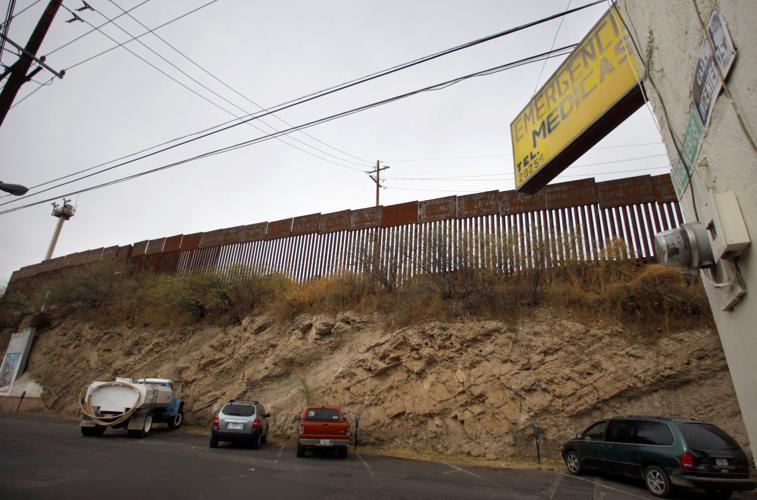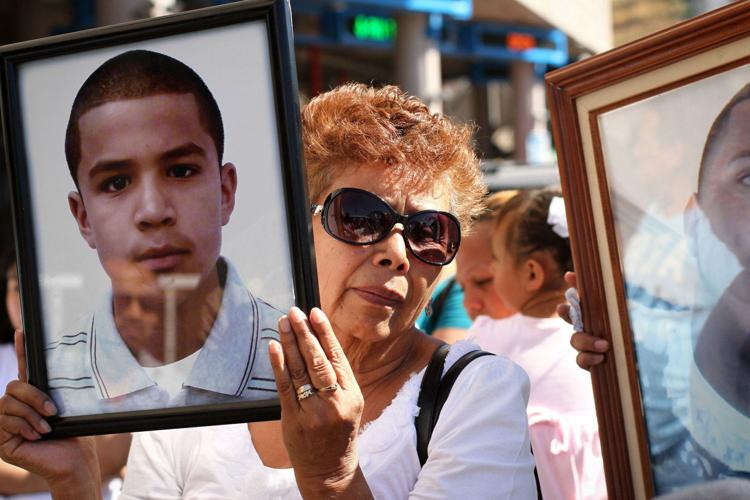Jurors canтt read or watch the news while they are serving.
Theyтre supposed to be isolated from outside information and come to the courtroom fresh and unpolluted. At least thatтs the idea.
But you canтt undo the social conditioning jurors have undergone before theyтre picked. And when it comes to the U.S.-Mexico border, the societal message has been clear for a long time, especially since the 2016 presidential campaign: The borderland is a danger zone where law officers are under constant attack.
That powerful message played a key role in Border Patrol Agent Lonnie Swartzтs defense, and, I suspect, helped justify his acquittal Monday of a second-degree murder charge. The public has a natural inclination to give officers the benefit of the doubt in cases like these, and the subconscious picture of a border populated by violent predators was layered on top of that.
People are also reading…
тEvery day, when agents like Lonnie Swartz go to work, they put on a bullet-proof vest and arm themselves,т defense attorney Sean Chapman said in his opening statement. тThey expose themselves to danger on a regular basis, particularly along the international border.т
Coincidentally, it emerged Monday that the Border Patrol has been exaggerating how much its agents are under attack. I suspect the verdict т the acquittal and the juryтs inability to come to a unanimous decision on a lesser manslaughter charge т and those lies are indirectly connected.
After the 2017 fiscal year ended Sept. 30, Customs and Border Protection reported a startling statistic т assaults on agents had increased by 73 percent from the previous year, from 454 in fiscal 2016 to 786 in fiscal 2017. In December, on the arrest of a УлшжжБВЅ priest and his sister for alleged assaults on Border Patrol agents. The allegations turned out to be baseless and made me question whether the agency was inflating assault figures.
I figured maybe the agents were reporting every little touch as an assault, but I never guessed the agency was simply multiplying to get higher results. Debbie Nathan, a longtime reporter in South Texas, in the online publication The Intercept that the alarming increase in assaults was produced by counting the same attacks over and over.
In one February 2017 case in South Texas, Nathan reported, seven agents were attacked by a group of six border crossers using rocks, bottles and branches. You would think this would count as seven assaults. But under a new counting policy, the CBP actually reported this incident as 126 separate assaults. Yes, 126.
How did this work? The agency counted each of the seven agents as being attacked by each of the six border crossers. Seven times six equals 42 assaults. Then they counted each type of object used as a separate assault. Forty-two times three equals 126.
The resulting surplus of assaults from this one incident, 119, accounted for 36 percent of the increase over the number counted in 2016. This method appears to have been used especially in the Rio Grande Valley sector, but may have been used across the country.
That sector reported 99 incidents in which agents were assaulted during fiscal year 2017, but it reported 422 total assaults. In other words, each incident led to more than four reported assaults.
Now, some of those reports are justified т more than one agent may be assaulted in the same incident. However, nationwide in 2017, there were 324 reported incidents resulting in 786 reported assaults on Border Patrol agents. This difference does not pass the smell test.
Of course, itтs too late to undo the impression that the much-publicized surge in assaults left on the public. Rep. Martha McSally cited the increase in a of the House Homeland Security subcommittee that she chairs.
In that hearing, National Border Patrol Council President Brandon Judd said, тI fear that the level of violence that we are seeing now may become the new normal.т
Funny thing is, it wasnтt even the old normal. It wasnтt real at all.
But that kind of rhetoric has been pouring into the public consciousness, even as the number of people trying to cross the border has plummeted, especially since Donald Trump made border insecurity the centerpiece of his presidential campaign, garnering the endorsement of the agentsт union along the way.
So no wonder that in his defense of Swartz, Chapman emphasized the danger that agents face when doing their job.
Jose Antonio Elena RodrУguez may have been on the other side of the border fence, down a rock face and across a Mexican street when Swartz shot him through the fence, but the 16-year-old could be transformed for the jury into the face of the rock-throwing foreigner assaulting our boys in green.
For years the union, the agency and politicians have been training us to fear him.






































